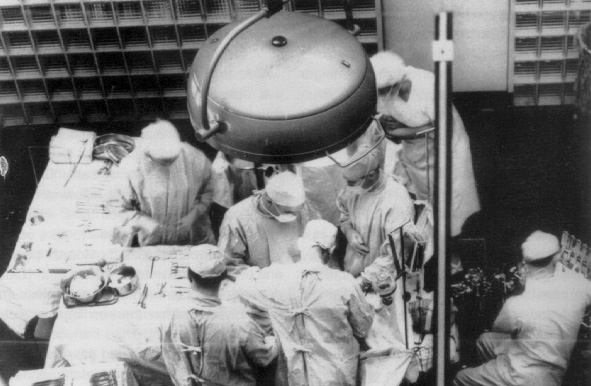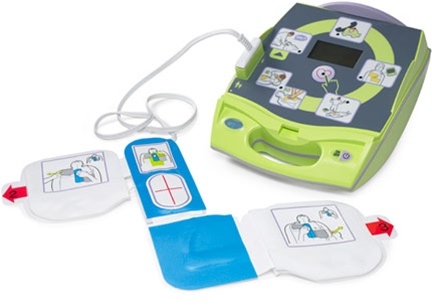.gif)
Joseph Corbett
HU338
.gif)
This is a comparative analysis between Mary Shelleys Frankenstein and real world surgeries and transplants. The character Viktor Frankenstein used medical techniques in order to create his monster. These techniques are in a way similar to modern medicine, where we can give someone the liver of a deceased person to keep them alive. What ideas for how the monster was created did Mary Shelley have? Just how similar are todays surgery and transplants to the world and time where Frankenstein takes place?
To start, let’s look at the monster from the story. In the actual story written by Shelley, it is never fully stated exactly how Viktor managed to build his monster. “I collected bones from charnel – houses and disturbed, with profane fingers, the tremendous secrets of the human frame.” (Shelley, chapter 4.)(Please excuse the lack of page numbers, the source for the book is here ). Here we see that Viktor uses at least the bones, if not flesh and organs, from the deceased. Unfortunately, Mary Shelley does not go into extreme detail. In fact, the majority of the process is left to the imagination. It isn’t until the beginning of chapter five, where Viktor goes on to describe what the creature looks like, mentioning how it does in fact have arteries, eyes, even hair. With this we can assume that he did in fact use the decaying parts of bodies that he most likely dug up. In the book, Viktor was fascinated by alchemy. One can also assume that he used some weird alchemy tricks, and possibly sewing, to put the parts together to form a body. Now the real question is, how did Viktor manage to make this body come alive? In the original movie made by Universal , we see the monster being brought to life with the electricity from lightning. This could be used as a substitute to fill in the holes from the book.
The first internal organ transplant done was in 1954 by Joseph E. Murray at Peter bent Brigham Hospital in Boston1. The kidney was donated by the twin of the patient, because the scientists believed it would be easier since identical twins have similar immune systems. Transplanting organs has since become easier, and more common. Surgeons can even transplant skin. The main problem with transplanting organs however, is keeping them fresh. In Frankenstein, Viktor has found organs from dead bodies. These organs, if not already decomposed, shouldn’t be able to function, let alone work in a new, artificial, body. Organs need to match. They are often donated by family members, as the DNA already mostly matches, but if it were to come from someone else, there are many factors involved. These include blood type, the severity of the patients condition, body size, if the patient is able to undergo the operation, and the distance between the donor and the patient (organdonor.gov). While it is obvious that Shelley did not know any of this, its still remarkable to think that maybe Viktor got lucky, and all the organs worked together. In fact it’s amazing that any of the organs were in good condition, as for any organ (from a living or deceased donor) needs to be kept refrigerated immediately to keep it from decomposing. If you would like a better history on organ transplants, please click here.

There is also the fact that Viktor had to either create or find arms and legs to create his creature. Even with modern medicine, transplanting arms, legs, hands or feet is difficult. The first few hand transplants actually resulted in the recipient’s body rejecting the hand. Some required medication for it to last longer. Even if it does work, it can still take a good amount of time to have full control of the new limb. For example, within the first few days you might be able to grab something, but it will take months to be able to tie your shoe. This also shows how Viktor would have trouble with this, as his creation seemed to be very dexterous as soon as he came to life.
Brain (or head) transplants are a whole different factor. One would have to assume that transplanting a head would be easier, as there are less things to attach to the brain (i.e. eyes, ears, and other senses). While the idea is there, this is something that has yet to be attempted.
As mentioned earlier, in the first movie adaptation of Shelleys Frankenstein, they used the lightning of a storm to bring the creature to life. The movie was released in 1931, which is sixteen (16) years prior to the first usage (on a human) of any form of a defibrillator. However, it was invented in 1930 by William Kouwenhoven, who was an electrical engineer. The way an Automatic External Defibrillator (AED) works, is that one attaches to pads to the patient, one on the left side of the chest, and the other on the right side of the abdomen, near the bottom of the rib cage. Once activated, the AED sends an electric pulse through one pad, through the body (and hopefully the heart) and back through the other pad (effectively creating a circuit). If done correctly, and with some luck, this will “jump start” the heart and get it pumping again. In the movie however, all they do is have the lightning strike a couple of nails (or something) sticking out of the monsters neck. For more information on AEDs please visit this site.

In conclusion, many of the techniques used by Viktor (and the ones that we assume he used) did not exist at the time when Mary Shelley first wrote Frankenstein. And even if they were, it would still be impossible for the creature to become reality. Many of the real life equivalents of what Viktor Frankenstein attempted can be done, some with difficulty. The only problem is creating a human altogether. As a species, we are very far from that technology. Viktors techniques are very similar, and Mary Shelleys ideas for how Viktor made the creature could possibly work. If you have any questions or comments, feel free to contact the author at corbetj3@my.erau.edu or at (207) 205-0792.
“Defibrillation.” Wikipedia, Wikimedia Foundation, 19 Sept. 2018, https://en.wikipedia.org/wiki/Defibrillation#History.
Fix, Megan. “History.” HOPES Huntington's Disease Information, web.stanford.edu/dept/HPS/transplant/html/history.html.
“Frankenstein (1931).” IMDb, IMDb.com, www.imdb.com/title/tt0021884/.
Gaines, John, and Megan Bingham. “A History of Classic Monsters: Frankenstein's Creature.” Judith Viorst: Writing with--and about--Feeling | Librarypoint, www.librarypoint.org/history_of_classic_monsters_frankensteins_creature.
“Hand Transplantation.” Wikipedia, Wikimedia Foundation, 2 Oct. 2018, en.wikipedia.org/wiki/Hand_transplantation.
“Matching Donors and Recipients.” Organ Donor, www.organdonor.gov/about/process/matching.html.
Neidich, Alon B. “The Frontiers of Organ Transplantation: ‘Oh, The Places We'll Go.’” Journal of Ethics | American Medical Association, American Medical Association, 1 Mar. 2012, journalofethics.ama-assn.org/article/frontiers-organ-transplantation-oh-places-well-go/2012-03.
Shelley, Mary. “Frankenstein.” , By Plato, The University of Adelaide Library, 5 Mar. 2014, ebooks.adelaide.edu.au/s/shelley/mary/s53f/index.html.